Scotswood bridge
Scotswood bridge
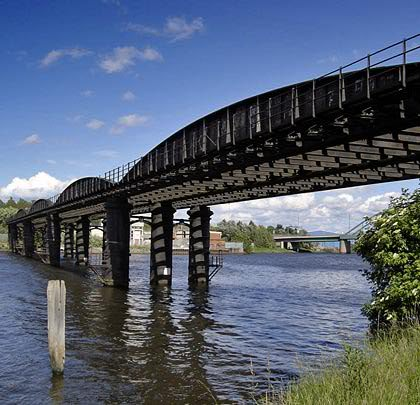
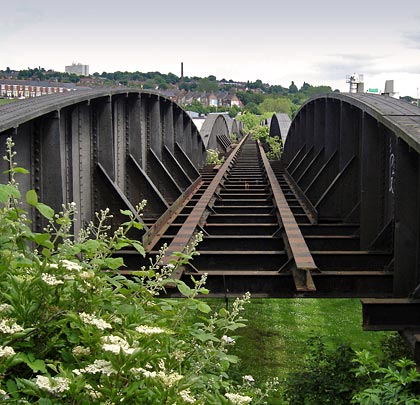
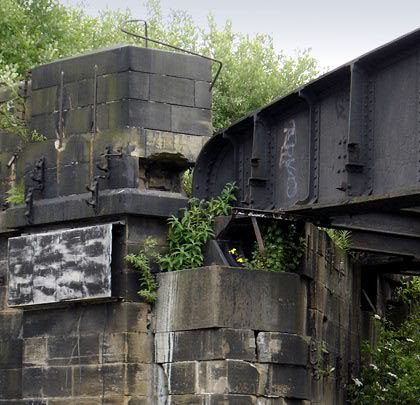
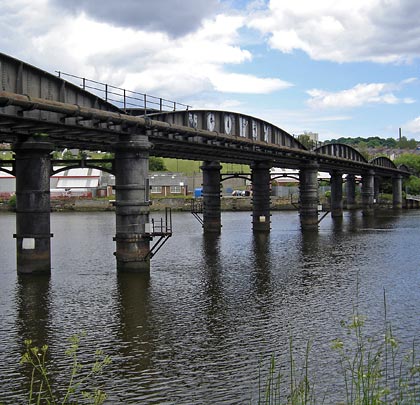
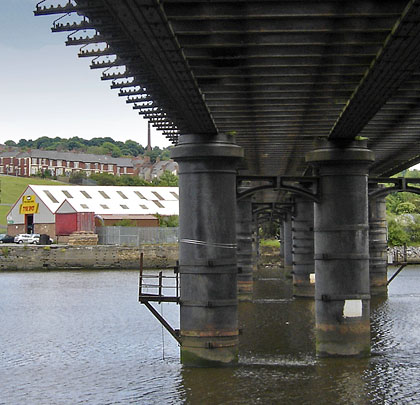
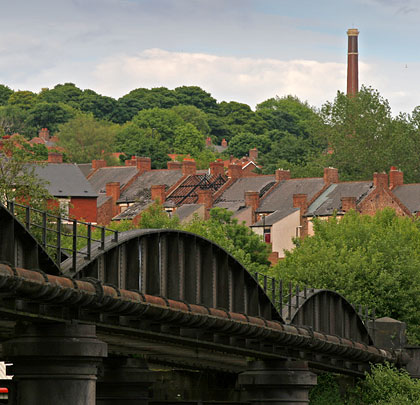
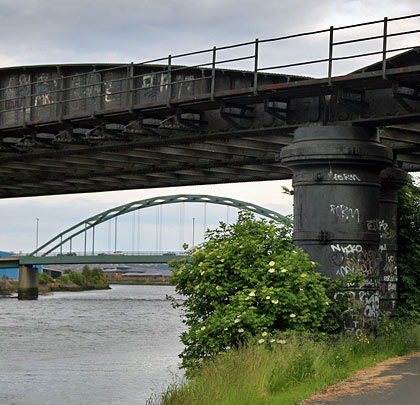
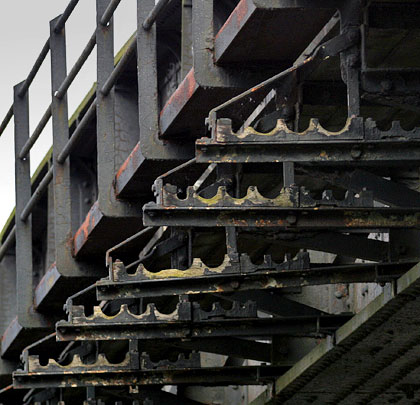








With six hogback girder spans standing on five groups of cast-iron tubular piers, this bridge is the fourth rail crossing of the Tyne at Scotswood.
In 1860, at the age of 21, the original timber structure succumbed to an engine’s hot ashes. A replacement spanned the gap a year later and a single track bridge was temporarily installed in 1865. T E Harrison’s existing 698-foot double-tracker first beared the weight of trains in 1871, thanks to an investment of £20,000.
It is built on a skew to allow traffic to approach at speed. Despite being strengthened in 1943, today it carries nothing heavier than gas and water mains.







